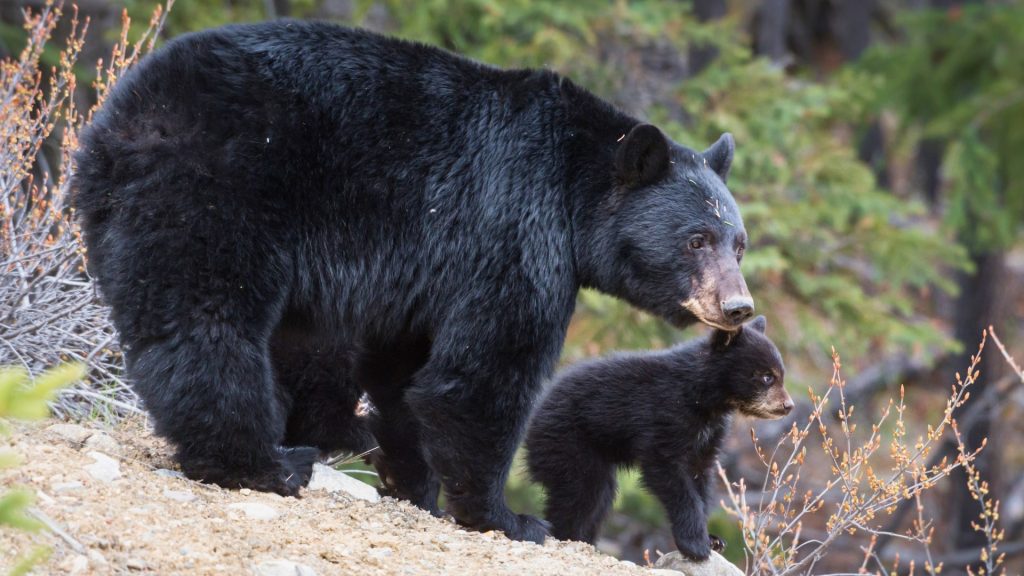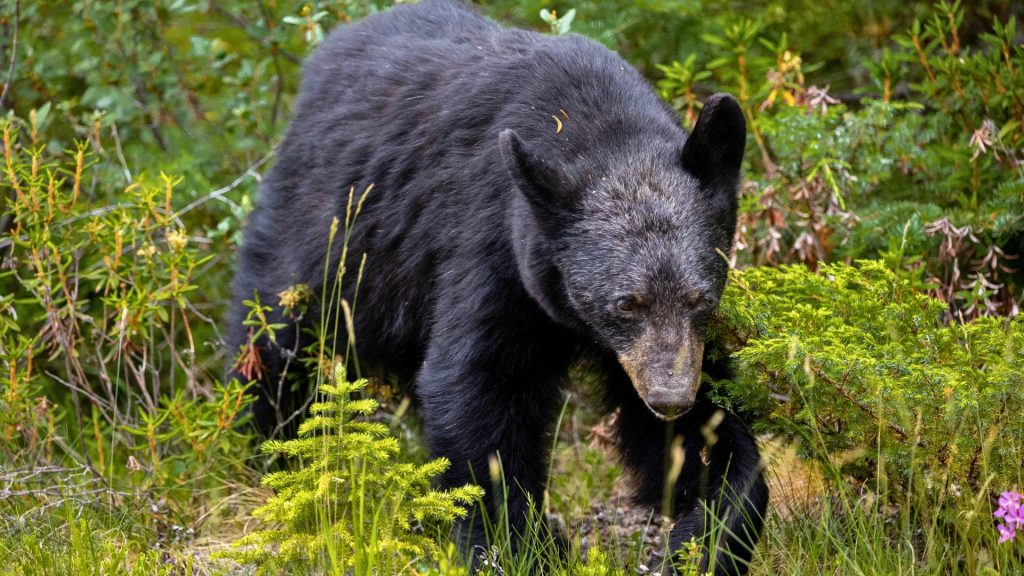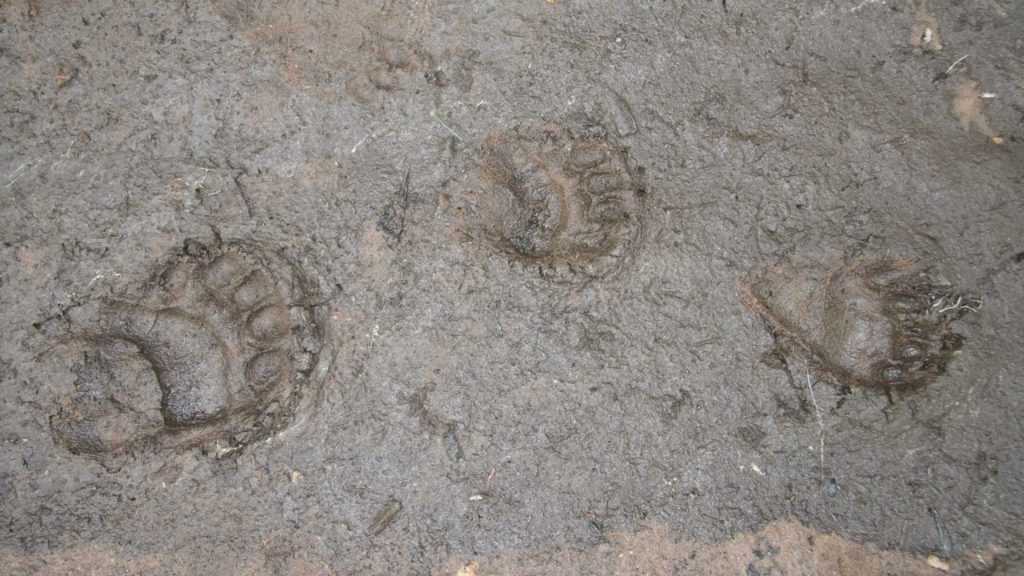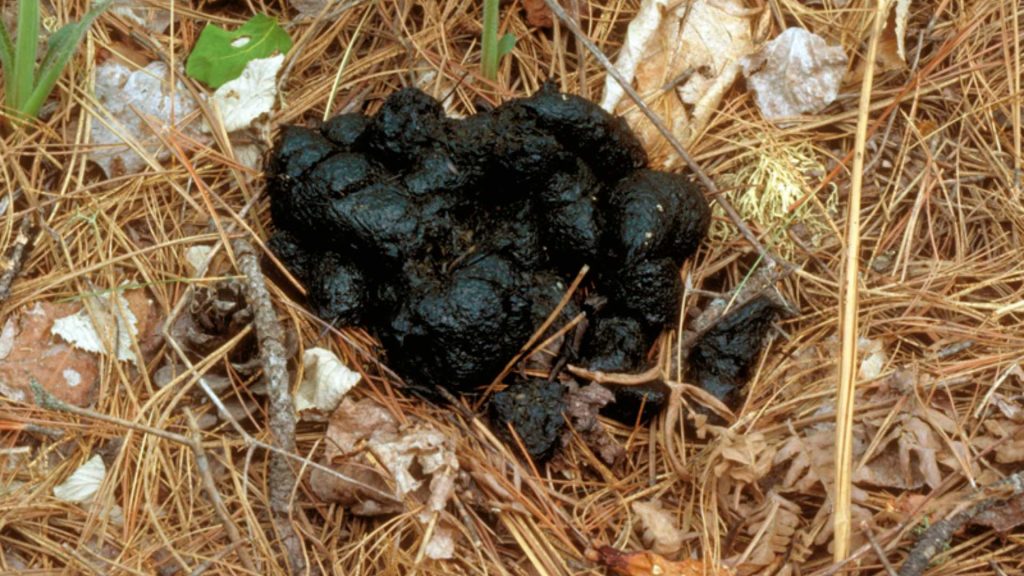Physical Characteristics
Black bears (Ursus americanus) are typically smaller than their brown bear cousins, with adult males weighing between 130-660 lbs and adult females weighing between 90-330 lbs. They have black fur, a brown snout, and short, curved claws that are adapted for climbing trees.
Behavior
Black bears are mostly solitary animals, except for females with cubs or during mating season. They are excellent climbers and swimmers, and are known to be very intelligent and curious. They are primarily active at dawn and dusk, but can be active during the day or night as well.
Habitat
Black bears can be found throughout much of North America, including forests, swamps, and mountains. They have adapted to a wide range of habitats, from the dense forests of the Pacific Northwest to the open prairies of the Great Plains.
Diet
Black bears are omnivores and their diet consists of both plant and animal matter. They eat a variety of foods, including nuts, berries, insects, small mammals, and fish. They are opportunistic feeders and will eat whatever is available in their environment.
Breeding
Breeding season typically occurs in the summer, with females giving birth to cubs in the winter den. Cubs are born blind and weigh only a few ounces. They stay with their mother for around 1.5-2 years before venturing off on their own.
Ecological Role
Black bears play an important ecological role in their habitat. They help control populations of prey animals and disperse seeds through their feces. They also provide food for scavengers such as eagles, ravens, and coyotes.
Black Bear Hunting
Hunting black bears is legal in many parts of North America, and it is an activity that is popular among hunters. Black bears are typically hunted for their meat, fur, and as a trophy. Hunting is regulated by state and provincial wildlife agencies, with specific hunting seasons and regulations.
In many areas, hunting is seen as a way to help control the bear population and reduce conflicts between bears and humans. However, it is important to note that over-hunting of these bears can have negative impacts on the species and their ecosystem.
Hunters can use a variety of methods to hunt black bears, including baiting, spot and stalk, and hunting with hounds. Baiting involves setting up a bait station to attract the bear, while spot and stalk hunting involves spotting the bear from a distance and then stalking it on foot. Hunting with hounds involves using specially trained dogs to track and corner the bear, allowing the hunter to make a shot.
It is important for hunters to follow all regulations and guidelines set by wildlife agencies to ensure sustainable hunting practices. In addition, hunters should always prioritize safety and respect for the animal and its habitat.
Tracks & Signs
Black bear tracks are generally round with five distinct toes and a large, robust pad. The rear foot often leaves a distinctive “C”-shaped heel imprint, while the front foot may show more elongated claw marks. The size of the tracks vary depending on the bear’s age and sex but typically the front print is 4-5 inches (10-13 cm) long, and hind print is 6-9 inches (15-23 cm) long. Sometimes, it can be hard to distinguish black bear tracks with those of a grizzly bear.
Black bear scat, or feces, is a common sign of their presence. It can vary widely in appearance depending on their diet, but it often has a tubular shape with a blunt end. Fresh scat may have a moist appearance, while older scat becomes drier and crumbles easily.
Conservation
Black bears have been hunted extensively in the past, leading to a decline in their population. However, conservation efforts have been successful in many areas, and black bear populations have rebounded. Many states and provinces now have hunting regulations in place to ensure sustainable hunting practices and to protect the black bear population.
Did You Know?
Despite their name, black bears can come in a variety of colors, including black, brown, cinnamon, and even blonde.
The coloration can vary depending on the region they inhabit. For example, black bears in forested areas tend to have darker fur, while those in open or arid habitats may have lighter fur.
They are excellent climbers.
They have strong, curved claws that enable them to scale trees effortlessly. Climbing trees provides them with a safe retreat from predators, a means to reach food sources like fruits and nuts, and even a place to rest or hibernate.
Black bears are the most numerous bear species in North America.
Their population is estimated to be over 600,000 individuals. However, they are still considered a vulnerable species in some regions due to habitat loss, poaching, and conflicts with humans.
Image sources: Wildlife Illinois, North American Bear Center





